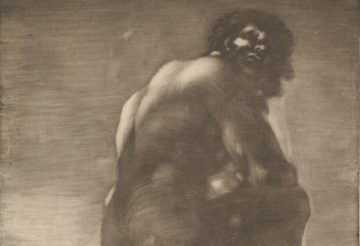Alejandro Anreus at Commonweal:
 In 1792, the Spanish painter Francisco Goya (1746–1828) became gravely ill. His convalescence and recovery lasted for more than a year, leaving him completely deaf. (Lead poisoning was suspected.) Had he died right then, at the age of forty-six, Goya would have been remembered as a competent, even elegant, Rococo painter with realist tendencies, but nothing more. Instead, his illness transformed him into an extraordinary artist, one marked by great emotional depth and inventive formal technique.
In 1792, the Spanish painter Francisco Goya (1746–1828) became gravely ill. His convalescence and recovery lasted for more than a year, leaving him completely deaf. (Lead poisoning was suspected.) Had he died right then, at the age of forty-six, Goya would have been remembered as a competent, even elegant, Rococo painter with realist tendencies, but nothing more. Instead, his illness transformed him into an extraordinary artist, one marked by great emotional depth and inventive formal technique.
There’s no denying Goya’s prowess as a painter. Just recall his arresting portraits and still lifes, or his masterful frescoes in San Antonio de la Florida Chapel in Madrid. There’s also his powerful Executions of the Third of May 1808 (1814) and his unsettling Black Paintings (1819–23), made near the end of his life. To fully grasp the extent of Goya’s achievements, though, one must consider his drawings and prints.
more here.
